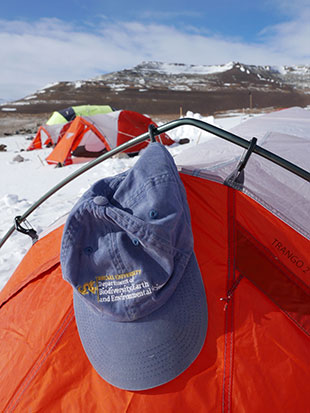To the Ends of the Earth
January 19, 2018

For most people, the thought of camping conjures images of leisurely hikes and starry nights cozied up to a campfire. For geoscience prof Ted Daeschler, PhD, it resembles something more like a two-day flight, followed by a noisy jaunt via military cargo plane, culminating in a 100-mile helicopter ride into the remote terrain and sub-freezing temperatures of Antarctica’s McMurdo Dry Valleys.
“I never imagined that I would utter the words ‘I’ll be camping in Antarctica for a month,’” says Daeschler, “but there I was!”
Through a multi-year expedition funded by the National Science Foundation, Daeschler and a team of scientists traveled to the polar desert in search of Late Devonian-age fossils, which are accessible via the region’s exposed bedrock. Though much of Antarctica is covered in glaciers, the Dry Valleys provide a unique glimpse of the streams that flowed 375-385 million years ago, a time that pre-dates dinosaurs.
Daeschler and crew hiked 3 to 4 miles a day, resting at night in windtight tents and sleeping bags capable of withstanding minus 50 degrees Fahrenheit. In their weeks of travel, the scientists collected a slew of fossils, from primitive shark teeth to the tiny bones of sarcopterygians (lobe-finned fish) and agnathans (jawless fish).
With their findings back in Philadelphia, Daeschler worked with Drexel co-op student Kelly Rozanitis, BS geoscience ’19, to organize, catalog and label the more than 500 fossil specimens from the expedition, with the ultimate goal of piecing together paths of evolutionary change.
In December of 2018, the team will head back to Antarctica, about 50 miles away from the Dry Valleys, for part two of their expedition.